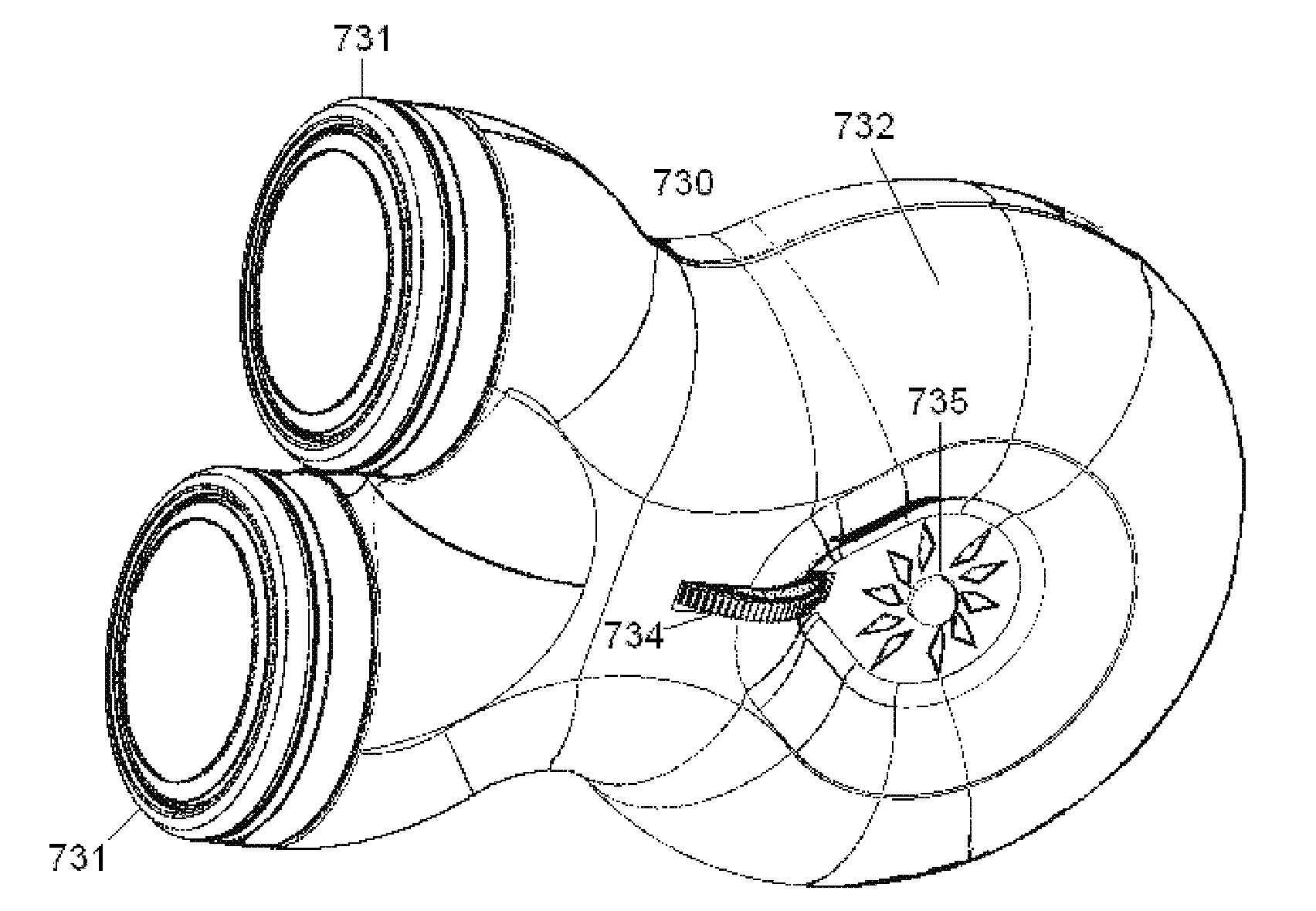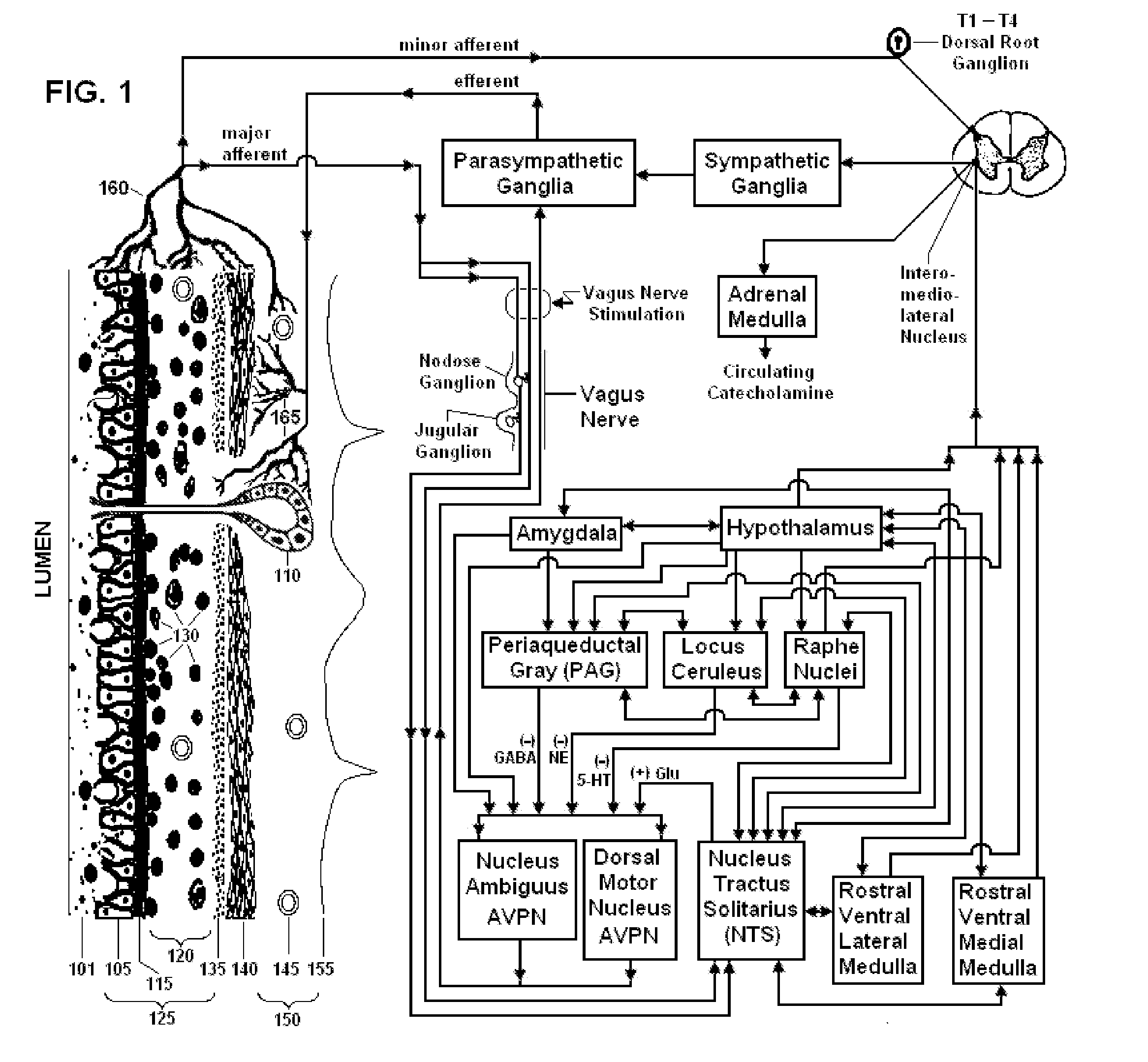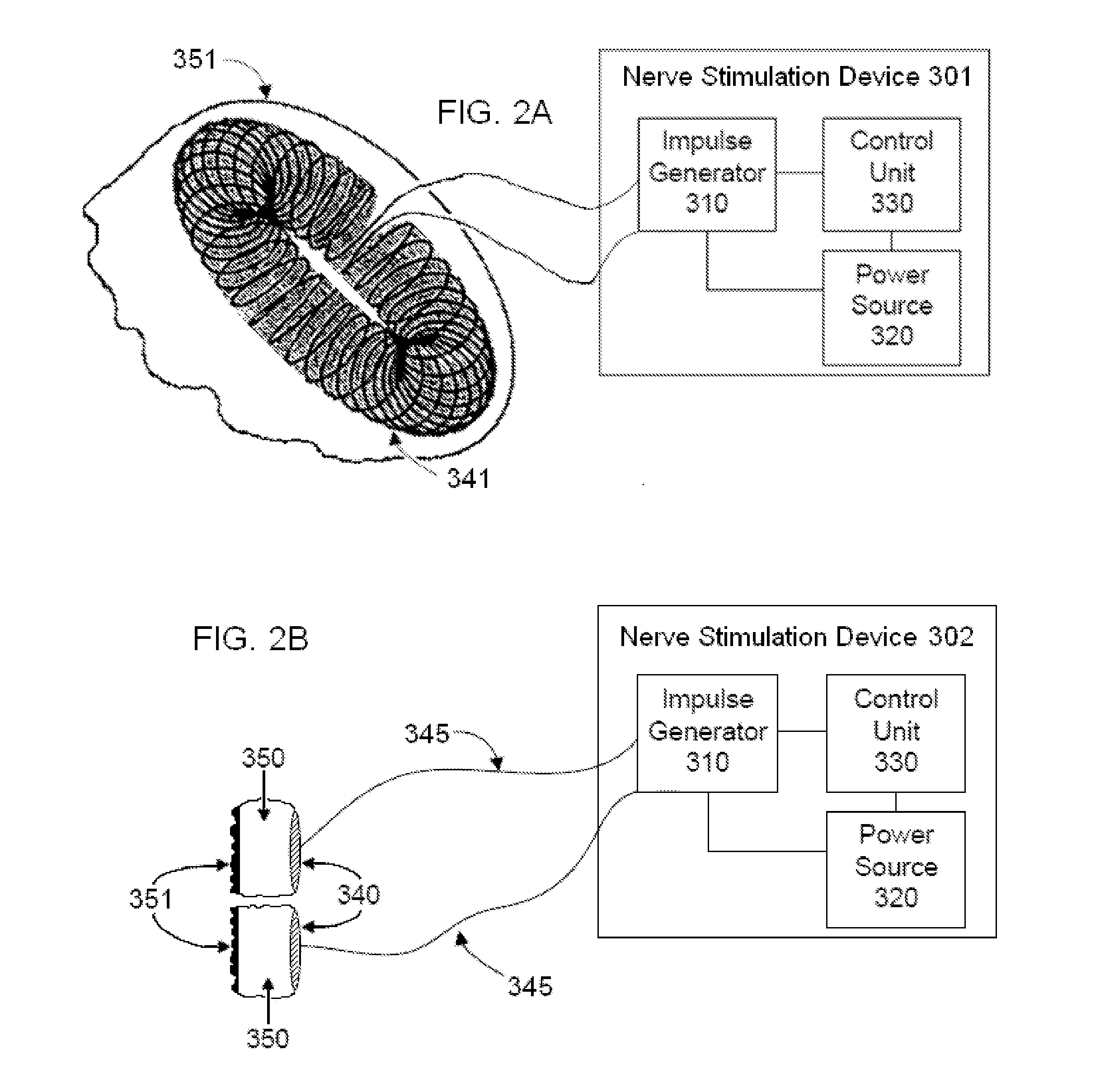The electrical circuits for magnetic stimulators are generally complex and expensive and use a
high current impulse generator that may produce
discharge currents of 5,000 amps or more, which is passed through the stimulator coil to produce a magnetic pulse.
Non-invasive procedures are generally painless and may be performed without the dangers and costs of
surgery.
Over time, this
inflammation can lead to scarring of the airways and a further reduction in
airflow.
This
inflammation leads to the airways becoming more irritable, which may cause an increase in coughing and increased susceptibility to
asthma episodes.
The combination can be lethal.
For some patients, however, these medications, and even the bronchodilators are insufficient to stop the
constriction of their bronchial passages.
Yet all such reactions are mediated by a series of hypersensitivity responses that result in uncontrollable
airway occlusion driven by
smooth muscle constriction, and dramatic hypotension that leads to shock.
Cardiovascular failure, multiple organ
ischemia, and asphyxiation are the most dangerous consequences of
anaphylaxis.
Tragically, many of these patients are fully aware of the severity of their condition, but nevertheless die while struggling in vain to manage the
attack medically.
Many of these fatal incidents occur in hospitals or in ambulances, in the presence of highly trained medical personnel who are powerless to break the cycle of inflammation and
bronchoconstriction (and life-threatening hypotension in the case of
anaphylaxis) affecting their patient.
For example,
epinephrine is not always available for immediate injection.
Even in cases where medication and attention is available, life-saving measures are often frustrated because of the nature of the symptoms.
This cardiovascular stress can result in
tachycardia, heart attacks and strokes.
COPD is a progressive
disease that makes it increasingly difficult for the patient to breathe.
COPD can cause coughing that produces large amounts of
mucus, wheezing, shortness of breath,
chest tightness and other symptoms.
In COPD, there is abnormally low air flow within the bronchial airways for a variety of reasons, including loss of elasticity in the airways and / or
air sacs, inflammation and / or destruction of the walls between many of the
air sacs and
overproduction of
mucus within the airways.
In emphysema, the walls between many of the
air sacs are damaged, causing them to lose their shape and become floppy.
This damage can also destroy the walls of the air sacs, leading to fewer and larger air sacs instead of many small ones.
This causes the lining to thicken and form thick
mucus, making it difficult to breathe.
Many of these patients also experience periodic episodes of acute airway reactivity (i.e., acute exacerbations), wherein the
smooth muscle surrounding the airways goes into spasm, resulting in further constriction and inflammation of the airways.
Frequent acute exacerbations of COPD cause
lung function to deteriorate quickly, and patients never recover to the condition they were in before the last
exacerbation.
As with asthma, current medical management of these acute exacerbations is often insufficient [Dick D. BRIGGS Jr.
However, many patients do not respond to those treatments, or they experience unwanted side effects.
For some patients, those agents may not be effective or are otherwise contraindicated, and the
bronchospasm may continue even after the surgery is completed.
Unlike cardiac arrhythmias, which can be treated chronically with pacemaker technology, or in emergent situations with defibrillators (implantable and external), there is no commercially available
medical equipment that can chronically reduce the baseline sensitivity of the
smooth muscle tissue in the airways, to reduce the predisposition to asthma attacks, to reduce the symptoms of COPD or to break the cycle of bronchial constriction associated with an acute
asthma attack or anaphylaxis.
Although energy has been applied previously to patients in such a way as to bring about bronchodilation, those investigations involve methods that are invasive.
The
vagus nerve innervates the heart, which raises additional concerns that even if VNS could be used to dilate bronchi, such
vagus nerve stimulation could trigger cardiac or circulatory problems, including
bradycardia, hypotension, and arrhythmia, particularly if the right
vagus nerve is stimulated [SPUCK S, Tronnier V, Orosz I, Schönweiler R, Sepehrnia A, Nowak G, Sperner J. Operative and technical complications of vagus
nerve stimulator implantation.
 Login to View More
Login to View More  Login to View More
Login to View More 


